
Introduction
Gemstones have captivated humanity for centuries with their mesmerizing beauty, vibrant colors, and innate rarity. These precious treasures of the Earth are not only symbols of luxury and wealth but also hold cultural, spiritual, and historical significance. While many gemstones are widely known and cherished, there exists a hidden realm of rare gemstones that are equally, if not more, enchanting. In this exploration, we will unveil 20 of the most stunning rare gemstones, each with its own unique story, characteristics, and allure.
1. Painite: The World’s Rarest Gemstone
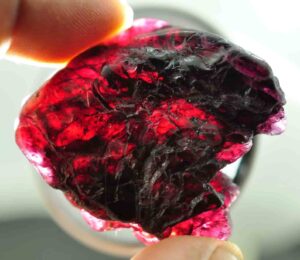
Credit: supremgem/etsy
Discovered in Myanmar during the mid-20th century, Painite has earned its reputation as one of the rarest and most coveted gemstones on Earth. Its captivating reddish-brown hue and extraordinary brilliance have captured the hearts of collectors and gem enthusiasts worldwide.
The story of Painite‘s discovery is one of serendipity and astonishment. In 1951, British mineralogist Arthur C.D. Payne stumbled upon a unique mineral that bore a remarkable resemblance to brownish-red topaz. However, upon closer examination, it was revealed to be an entirely new gemstone with dazzling optical properties. Named after gemologist Richard T. Liddicoat, Painite’s journey from obscurity to fame began.
What sets Painite apart is not only its exceptional beauty but also its extreme rarity. For decades after its initial discovery, only two known Painite specimens existed – one in the British Museum and the other in the Gemological Institute of America (GIA) collection. This scarcity, coupled with the gem’s mesmerizing appearance, sent shockwaves through the world of gemology, leading to Painite’s title as the “world’s rarest gemstone.”
Painite’s visual appeal is a symphony of colors that dance within its reddish-brown depths. Its hexagonal crystal structure and remarkable pleochroism, which causes the gem to display different colors when viewed from different angles, contribute to its enchanting beauty. Under the glow of light, Painite exhibits an exceptional play of color and brilliance that evokes a sense of wonder.
While the gem’s unique allure has propelled it into the spotlight, the challenges associated with its rarity and sourcing have also brought ethical considerations to the forefront. Painite is primarily found in Myanmar, a region known for its complex political landscape and gem trade-related issues. Responsible sourcing and sustainable practices are essential to ensure that the beauty of Painite does not come at the cost of ethical concerns.
In recent years, additional deposits of Painite have been discovered, easing its scarcity to some extent. However, the gem’s aura of exclusivity and its ongoing appeal to collectors and connoisseurs remain steadfast. Painite’s value has escalated in accordance with its rarity, often reaching astronomical figures in the market.
2. Musgravite: Born from Meteorite Impact

In the realm of gemstones, where each treasure holds a story etched in time, Musgravite emerges as a gem of cosmic wonder. Born from the aftermath of a meteorite impact, this remarkable gemstone showcases a vivid bluish-green hue and an otherworldly charm that has captivated gem enthusiasts and collectors alike.
The story of Musgravite begins in the Musgrave Range of South Australia, where a meteorite collision with Earth’s surface created the conditions necessary for its formation. Discovered in 1967, Musgravite quickly earned its place as one of the rarest gemstones on the planet, owing its name to the region of its origin.
What makes Musgravite truly exceptional is its celestial heritage. Created through the intense heat and pressure generated by a meteorite impact, this gem embodies a connection to the cosmos that few other gemstones can claim. Its mesmerizing bluish-green color, reminiscent of the depths of outer space, adds to its allure, making it a prized possession for those who seek gems with a story as captivating as their appearance.
Musgravite’s remarkable hardness further elevates its status as a sought-after gemstone. With a rating of 8.5 on the Mohs scale, it boasts exceptional durability that enables it to withstand the rigors of daily wear. This combination of rarity, color, and durability makes Musgravite a gem of exceptional value for both collectors and jewelry enthusiasts.
However, Musgravite’s scarcity remains one of its defining features. With only a handful of known specimens in existence, its allure is further heightened. Each Musgravite gemstone becomes a piece of Earth’s history, a fragment of the cosmic event that birthed its existence.
For those who seek gems that transcend the ordinary, Musgravite offers a journey into the cosmos itself. Its celestial origins, stunning bluish-green hue, and rarity create a captivating trifecta that sets it apart in the world of gemstones. As we continue to unearth the secrets of our universe, Musgravite stands as a tangible connection to the mysteries of the cosmos, a gem that sparkles with the brilliance of celestial creation.
3. Grandidierite: A Kaleidoscope of Hues
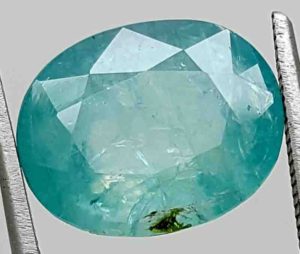
Grandidierite emerges as a true masterpiece of nature’s artistry. Named after French explorer Alfred Grandidier, this gemstone is renowned for its remarkable trichroism, showcasing an enchanting play of colors that dance within its depths.
Discovered in Madagascar in the early 20th century, Grandidierite’s striking appearance and scarcity have earned it a place among the most coveted gemstones in the world. What sets Grandidierite apart is its unique ability to display three distinct colors when viewed from different angles. The gem transitions from blue-green to bluish-violet and, on occasion, even colorless, creating a visual symphony that captures the imagination.
This captivating trichroism is a result of the gem’s crystal lattice structure, which interacts with light in a way that produces a kaleidoscope of hues. As light enters the gem, it is split into different wavelengths, revealing the spectrum of colors that lie within. The interplay of colors within Grandidierite gives each gemstone an almost magical quality, as if it holds a secret world of colors waiting to be discovered.
Grandidierite’s rarity further enhances its allure. Found in only a handful of locations across the globe, including Madagascar, Sri Lanka, and parts of Africa, the gem’s scarcity has contributed to its status as a collector’s dream. With limited availability, each Grandidierite gem becomes a unique and cherished piece of nature’s artistry.
Beyond its visual appeal, Grandidierite also holds significance as a gem that encourages self-discovery and introspection. Believed by some to promote harmony and inner peace, the gem’s tranquil colors and mesmerizing trichroism add a spiritual dimension to its already enchanting character.
4. Red Beryl: The Scarlet Jewel of Utah
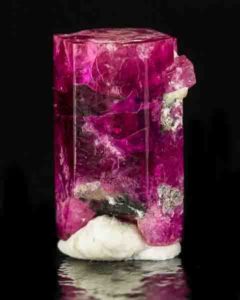
Red Beryl. Often referred to as “red emerald” due to its stunning color, this gemstone is a true marvel of nature, with a fiery hue that ignites the imagination and a scarcity that has collectors and enthusiasts in pursuit.
The story of Red Beryl begins in the Wah Wah Mountains of Utah, USA, where it was first discovered in 1904. Its vibrant red tones, ranging from rich raspberry to deep scarlet, immediately set it apart from other gemstones. The gem’s vivid coloration is attributed to the presence of manganese, which infuses it with an irresistible intensity.
What makes Red Beryl even more captivating is its rarity. This gemstone is one of the rarest in the world, with only a handful of known deposits scattered across the globe. The Wah Wah Mountains remain its primary source, but even there, finding high-quality Red Beryl is a daunting challenge. As a result, Red Beryl is often considered rarer than diamonds, making it a highly sought-after prize among collectors.
The scarcity of Red Beryl has led to its astronomical value. Its vivid color, combined with its rarity, has catapulted it into the upper echelons of the gem market. The gem’s breathtaking beauty and limited availability have caused its prices to rival those of other renowned gemstones.
In addition to its exquisite appearance, Red Beryl also holds cultural and spiritual significance for some Native American communities in the region. It is believed to carry energy that aligns with the root chakra, enhancing vitality and grounding.
To uncover the world of Red Beryl is to embark on a journey of both beauty and rarity. Its fiery red hues, intertwined with the rich history of the earth, create a gem that is truly a wonder to behold. As collectors and enthusiasts continue to seek the hidden treasures of the natural world, Red Beryl remains a beacon of beauty, rarity, and the untamed forces of nature’s artistry.
5. Jadeite: Imperial Jade of Burma
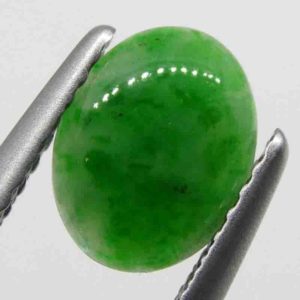
Known for its rich green hues and unparalleled beauty, Jadeite is not just a gemstone; it is a symbol of prestige, spirituality, and a connection to ancient civilizations.
Jadeite is one of the two recognized types of jade, the other being nephrite. However, it is Jadeite that holds a special place in the hearts of gem enthusiasts and collectors, especially the coveted “imperial jade.” The most exquisite Jadeite hails from Myanmar (formerly Burma), a region where it has been revered for centuries and associated with both cultural and spiritual beliefs.
What distinguishes Jadeite from other gemstones is its remarkable translucence and vivid green colors. Ranging from delicate mint greens to deep emerald tones, the gem’s hues are often likened to the lush foliage of a pristine forest. The intensity and saturation of these greens are influenced by the presence of chromium and iron within the gem.
In Chinese culture, Jadeite is a symbol of virtue, purity, and longevity. It is often carved into intricate shapes and symbols, such as the “pi” disc and the mythical “bi” ring, which carry deep spiritual meanings. Additionally, Jadeite has a special connection to imperial history, with emperors of ancient China considering it the “royal gem.”
The scarcity of high-quality Jadeite has further elevated its value and desirability. While there are several sources of Jadeite worldwide, including Myanmar, Guatemala, and Japan, Myanmar remains the primary supplier of the finest imperial green Jadeite. Due to its limited availability and the demand for this prestigious gemstone, prices can reach astounding levels in the market.
In recent years, Jadeite has gained international recognition and appreciation beyond its cultural origins. As modern designers incorporate Jadeite into contemporary jewelry designs, its allure continues to captivate a global audience. Whether cherished for its historical significance, spiritual connotations, or breathtaking beauty, Jadeite remains an eternal gem that bridges the gap between the past and the present.
6. Benitoite: A Californian Treasure
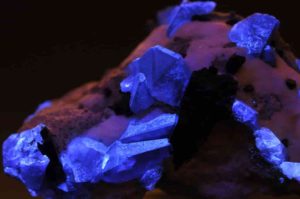
Benitoite emerges as a rare and captivating treasure that is uniquely tied to the state of California. This gem, often referred to as California’s state gemstone, boasts a mesmerizing sapphire-blue hue that has intrigued collectors and enthusiasts for generations.
Benitoite was first discovered in 1907 in the San Benito County of California, USA, from which it derives its name. What sets this gem apart is its remarkable fluorescence under ultraviolet (UV) light, which transforms its appearance from a stunning blue to a dazzling shade of white. This characteristic property has earned it the moniker “blue diamond under UV light.”
The vivid blue color of Benitoite is due to the presence of barium, titanium, and silica in its composition. The combination of these elements produces a hue that is reminiscent of the deep blue skies and oceans. Benitoite’s color is further accentuated by its transparency and brilliance, making it a true gemological wonder.
One of the most intriguing aspects of Benitoite is its limited geographic occurrence. Although other deposits have been found, the gem is most famously associated with the Benitoite Gem Mine in California. Its scarcity and unique fluorescence have fueled its demand among collectors and enthusiasts, making it a sought-after and prized gemstone.
In addition to its rarity and beauty, Benitoite carries a piece of California’s history and geological heritage. In 1985, Benitoite was designated as the official state gemstone of California, highlighting its significance to the region’s natural treasures. The Benitoite Gem Mine, once a source of gem-quality material, is now a protected area, preserving its delicate ecosystem and ensuring the gem’s sustainable future.
7. Alexandrite: Nature’s Color-Changing Miracle
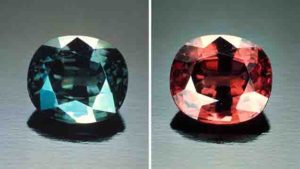
Alexandrite stands as a true marvel of nature’s ingenuity. Renowned for its remarkable color-changing properties, this gemstone transforms under different lighting conditions, revealing hues that range from lush green to deep purplish-red. This chameleon-like characteristic has earned Alexandrite the affectionate nickname, “emerald by day, ruby by night.”
Discovered in the Ural Mountains of Russia in the 1830s, Alexandrite’s mesmerizing color shift captured the imagination of gem enthusiasts and collectors around the world. Its unique ability to change color is a result of the interplay between chromium and iron within its crystal structure. In daylight or fluorescent light, Alexandrite appears green or bluish-green, reflecting the gem’s chromium content. However, under incandescent light, which has a higher proportion of red wavelengths, the gem takes on a deep red hue.
This color-changing phenomenon is best appreciated when Alexandrite is viewed in various lighting settings. The gem’s ability to adapt its appearance adds a layer of intrigue and fascination, making it a highly sought-after gemstone for those who appreciate the interplay of light and color.
Beyond its captivating optical properties, Alexandrite carries a legacy of rarity. While deposits of this gemstone have been found in various locations, including Russia, Brazil, Sri Lanka, and East Africa, high-quality specimens are scarce and command significant value in the market. Natural Alexandrite with strong color change and good clarity is particularly prized among collectors and connoisseurs.
Alexandrite’s uniqueness has inspired jewelry designers and enthusiasts alike to create pieces that highlight its exceptional color shift. From solitaire rings to intricate necklaces, Alexandrite’s beauty continues to captivate the hearts of those who seek gemstones that transcend the ordinary.
In essence, Alexandrite is a gem that reveals nature’s artistic brilliance. Its color-changing abilities, combined with its rarity, make it a gemstone that embodies the magic of light and color. As collectors and admirers continue to uncover the hidden gems of the Earth, Alexandrite stands as a testament to the wonders that nature has to offer, inviting us to marvel at its ever-changing beauty.
8. Poudretteite: Delicate and Rare
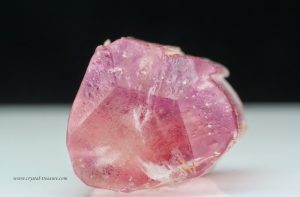
Named after the Poudrette family who owned the quarry where it was first discovered, this gemstone captivates with its charming pink hues and limited availability.
Poudretteite’s journey into the gemological spotlight began in 1965 when it was unearthed in Quebec, Canada. Its soft, rosy shades range from delicate pastels to more vibrant pinks, making it a favorite among those who appreciate gems with a touch of femininity and grace.
What sets Poudretteite apart is not only its color but also its scarcity. This gemstone is exceptionally rare, with only a handful of known deposits worldwide. Its limited availability has elevated its desirability among collectors and enthusiasts, who often seek it out for its uniqueness and captivating color.
Poudretteite’s charming appearance has earned it a place in the jewelry world, where it is sometimes featured in elegant pieces that showcase its gentle pink hues. Its relatively recent discovery, combined with its limited mining sources, makes Poudretteite a gemstone that is both a collector’s dream and a testament to the hidden treasures of the Earth.
Beyond its visual appeal, Poudretteite also carries a sense of wonder and discovery. As we continue to explore the depths of our planet, gems like Poudretteite remind us that there are still mysteries waiting to be uncovered, waiting to reveal their beauty and secrets to those who appreciate their rarity and allure.
9. Taaffeite: A Fortuitous Discovery
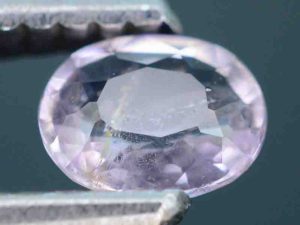
Taaffeite stands as a symbol of the unexpected and the extraordinary. Named after its discoverer, gemologist Richard Taaffe, this alluring gem has captivated collectors and enthusiasts with its enigmatic charm and captivating hues.
Taaffeite’s story began with a case of mistaken identity. In 1945, a spinel gemstone from Sri Lanka was initially misclassified as spinel, but upon closer examination, it was revealed to be an entirely new gemstone species. This serendipitous discovery unveiled a gem of stunning lavender to mauve shades, often embraced by collectors for its rarity and captivating color.
The scarcity of Taaffeite has made it a true gemological rarity. This gem is found in only a few select locations around the world, primarily in Sri Lanka, Myanmar, and a few other regions. Its limited availability, coupled with its exquisite appearance, has given rise to its status as a highly sought-after collector’s gem.
One of the most intriguing aspects of Taaffeite is its chameleon-like nature. The gem can exhibit different colors depending on the lighting conditions and the angle from which it is viewed. This color-shifting quality adds a touch of mystique to its allure, making it a gem that continues to surprise and delight those who admire it.
Taaffeite’s journey from obscurity to gemological fame serves as a reminder of the ongoing exploration of our planet’s hidden treasures. Its delicate lavender hues, paired with its captivating play of colors, create a gemstone that sparks curiosity and admiration. As collectors and enthusiasts continue to seek out the rare and the exceptional, Taaffeite stands as a gemstone that embodies the magic of discovery and the allure of the unknown.
10. Serendibite: Named after Serendib

Named after the old Arabic name for Sri Lanka, “Serendib,” this gemstone is celebrated for its deep blue to bluish-green hues that evoke a sense of mystery and enchantment.
Serendibite’s story began on the island of Sri Lanka, where it was first discovered in the early 20th century. Its stunning blue color, often reminiscent of the depths of the ocean, immediately set it apart as a gemstone of exceptional beauty. With hues that range from rich navy blues to vibrant teals, Serendibite has captured the attention of collectors and gem enthusiasts worldwide.
What makes Serendibite particularly captivating is its rarity. The gem is found in only a few select locations, including Sri Lanka, Myanmar, and a handful of other regions. Its limited geographic occurrence has elevated its status as a sought-after collector’s gem, adding an element of exclusivity to its allure.
Serendibite’s mesmerizing appearance is a result of its unique mineral composition. Comprising aluminum, magnesium, silicon, and oxygen, this gemstone captures and reflects light in a way that produces its signature deep blue colors. Its pleochroism, which causes the gem to display different colors when viewed from different angles, adds to its complexity and charm.
In addition to its visual allure, Serendibite carries a sense of history and connection to the island from which it takes its name. The gem’s deep blue hues have led to associations with the sea, symbolizing tranquility, depth, and the mysteries that lie beneath the surface.
As collectors and gem enthusiasts continue to seek out the rarest and most remarkable gems, Serendibite shines as a testament to the hidden treasures of the Earth. Its deep blue and bluish-green colors, combined with its scarcity, create an aura of intrigue and fascination. Serendibite stands as a gemstone that invites us to explore the mysteries of the natural world and the captivating beauty that lies within it.
11. Black Opal: Play-of-Color in Darkness
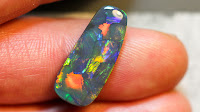
Black Opal’s story begins in Australia, where it is primarily mined. The opal-rich fields of Lightning Ridge, New South Wales, have been the source of many exquisite Black Opal specimens. What distinguishes Black Opal from other opal varieties is its deep, dark base color, which sets the stage for its vibrant play of colors.
Opals are known for their unique optical properties, specifically their ability to diffract light into an array of spectral colors. Black Opal, with its dark body tone, allows these colors to shine even more brilliantly, creating a mesmerizing dance of hues that change with the angle of observation and lighting conditions.
The play of colors within Black Opal is a result of the arrangement of silica spheres within the gemstone. When light enters the opal, it interacts with these spheres, producing the spectral colors that make opals so captivating. From fiery reds and oranges to cool blues and greens, the spectrum of colors that Black Opal exhibits is a testament to nature’s ability to create breathtaking beauty.
Black Opal’s allure extends beyond its captivating play of colors. It has earned a special place in jewelry design, where its unique appearance is often the centerpiece of exquisite pieces. From opulent rings to intricate pendants, Black Opal’s striking beauty adds a touch of magic to any jewelry creation.
12. Jeremejevite: Elusive and Enchanting

Jeremejevite’s story began in 1883 when it was discovered in Siberia and named after the Russian mineralogist Pavel Vladimirovich Eremeev. However, it was initially mistaken for aquamarine due to its similar blue color. It wasn’t until later that Jeremejevite was recognized as a distinct mineral species with its own unique properties.
What sets Jeremejevite apart is its scarcity. The gemstone is found in only a few locations worldwide, including Namibia, Madagascar, and Afghanistan. This limited geographic occurrence, combined with its captivating color, has elevated Jeremejevite to the status of a collector’s gem, highly sought after for its rarity and aesthetic appeal.
One of the gem’s most enchanting features is its pleochroism, which causes it to display different shades of blue when viewed from different angles. This optical phenomenon adds depth and dimension to the gem’s color, enhancing its allure and capturing the ever-changing shades of the sky.
Jeremejevite’s delicate beauty has also made it a favorite among jewelry designers. From simple settings that showcase its natural elegance to more intricate designs that highlight its unique color play, Jeremejevite’s versatility in jewelry creation is a testament to its timeless charm.
13. Red Diamond: A Rarity Among Rarities

Red Diamonds get their captivating hue from the presence of nitrogen within their crystal lattice, which interacts with light in a way that produces their fiery red color. While most diamonds owe their color to impurities or structural defects, the specific conditions required to create a red diamond are exceptionally rare, making them some of the rarest gemstones on Earth.
The most famous red diamond is the “Moussaieff Red Diamond,” a stunning gem weighing 5.11 carats. Its extraordinary color and rarity have earned it a place among the world’s most valuable diamonds. Other notable red diamonds include the “Rob Red” and the “Supreme Purple Star,” both of which boast unique color combinations that set them apart.
The scarcity of red diamonds has propelled them into the realm of high-profile auctions and elite collections. Their limited availability and unparalleled beauty have led to some red diamonds achieving astronomical prices in the market, often breaking records for the most expensive per-carat prices ever paid for gemstones.
In addition to their rarity, red diamonds carry an aura of mystique and desire. The color red is often associated with passion, love, and power, making red diamonds even more alluring to those who seek a gem that embodies these qualities.
14. Padparadscha Sapphire: The Lotus Blossom Gem
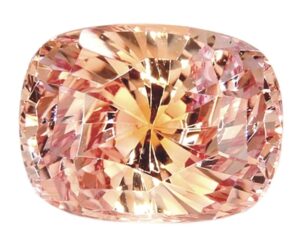
Named after the Sinhalese word for the lotus blossom’s delicate color, this gemstone is celebrated for its enchanting blend of pink and orange hues, reminiscent of a breathtaking sunset over a serene landscape.
Padparadscha Sapphires are predominantly found in Sri Lanka, where the gem’s name is derived from its association with the lotus flower, a revered symbol in Eastern cultures. The gem’s color ranges from delicate shades of peachy-pink to vivid orange-pink, creating a captivating palette that evokes a sense of warmth and tranquility.
What sets Padparadscha Sapphire apart is its rarity and the unique interplay of colors within each gem. The delicate balance between pink and orange tones is a result of the presence of trace elements, such as chromium and iron, within the crystal structure of the sapphire. This exquisite combination of colors makes Padparadscha Sapphire highly sought after by collectors and connoisseurs.
The gem’s color not only reflects the hues of nature but also carries symbolism. The pink-orange blend is often associated with qualities such as love, harmony, and creativity, making Padparadscha Sapphire a gemstone that holds deep emotional meaning for those who wear it.
In the realm of jewelry, Padparadscha Sapphires are prized for their versatility. They can be featured in a variety of settings, from classic solitaire rings to more elaborate designs that showcase the gem’s unique color play. Their scarcity and distinctive appearance add an element of exclusivity to any piece of jewelry they grace.
As gem enthusiasts and collectors explore the world of colored gemstones, Padparadscha Sapphire remains a treasure that captures the splendor of nature’s palette. Its harmonious blend of colors, combined with its rarity, creates a gemstone that is as elegant as it is enchanting, embodying the serene beauty of a sunset within a precious jewel.
15. Sugilite: A Gem of Royal Purple
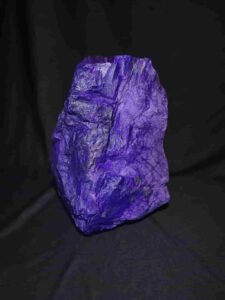
Sugilite was first discovered in Japan in the 1940s and later in South Africa. Its vivid purple color is attributed to its manganese content, which infuses the gemstone with shades ranging from delicate lavender to rich deep violet. The gem’s color, coupled with its rarity, has made it a favorite among individuals who appreciate gems with a touch of mystique.
What sets Sugilite apart is not only its physical beauty but also its spiritual significance. In metaphysical circles, Sugilite is often regarded as a stone of spiritual enlightenment, inner peace, and emotional healing. It is believed to enhance intuition, promote self-discovery, and facilitate a deeper understanding of one’s life path.
Sugilite’s role in holistic and alternative healing practices has brought it into the spotlight, with proponents attributing various metaphysical benefits to the gem. Its energy is thought to resonate with the crown and third eye chakras, helping individuals connect with their higher selves and access higher states of consciousness.
Beyond its metaphysical properties, Sugilite has also made its mark in the world of jewelry design. Its distinctive color and rarity make it an intriguing choice for those who seek gemstones that stand out from the ordinary. From statement rings to elegant pendants, Sugilite’s allure continues to captivate the hearts of those who value the beauty and symbolism that gemstones can offer.
16. Tanzanite: Trichroism in Blue
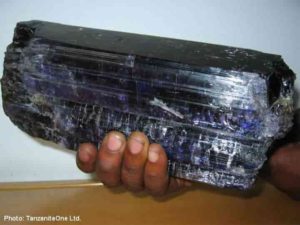
Tanzanite is celebrated for its mesmerizing blue hues that range from ultramarine to violet.
Tanzanite’s story began in 1967 in the foothills of Mount Kilimanjaro in Tanzania. Originally mistaken for sapphire due to its rich blue color, Tanzanite was later identified as a unique mineral species. Its vivid blue-violet tones, ranging from deep indigo to lighter lilac shades, have since captured the imagination of collectors and gem enthusiasts worldwide.
What sets Tanzanite apart is its exceptional pleochroism, an optical phenomenon that causes the gem to display different colors when viewed from different angles. This unique property adds depth and intrigue to Tanzanite’s appearance, creating a gemstone that seems to shimmer and shift in hue as it catches the light.
Tanzanite’s coloration is attributed to its mineral composition and the presence of vanadium. The gem’s rich blue-violet tones make it a favorite for those who appreciate gems with a touch of both cool and warm colors, resembling the union of sapphire’s blue and amethyst’s purple.
Tanzanite’s allure extends beyond its captivating appearance. Its discovery in a single location, the Merelani Hills of Tanzania, has led to its classification as a “one-source gem.” With mining activity focused primarily on this area, Tanzanite’s availability remains limited, adding an element of exclusivity to its charm.
In the realm of jewelry, Tanzanite’s versatility shines. It can be found in a variety of settings, from classic solitaire rings to contemporary designs that highlight its unique color and play of light. Its rarity and mesmerizing color make it an exquisite choice for those who seek a gemstone that is as exceptional as it is beautiful.
17. Paraiba Tourmaline: Neon Brilliance
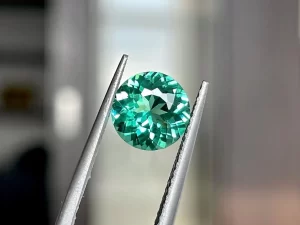
Paraiba Tourmaline’s captivating story began in the 1980s when it was discovered in the Brazilian state of Paraíba, which gives the gem its name. What sets Paraiba Tourmaline apart is its remarkable neon-like coloration, ranging from vivid turquoise blue to mesmerizing green. This unparalleled color comes from the presence of copper and manganese trace elements within the crystal structure.
The rarity of true Paraiba Tourmaline cannot be overstated. While other types of tourmaline are found in various locations, genuine Paraiba Tourmaline is sourced primarily from Brazil, as well as from Mozambique and Nigeria. Its limited geographic occurrence, combined with its unique and vibrant color, has made Paraiba Tourmaline one of the most sought-after and valuable gemstones in the world.
The gem’s exceptional color and rarity have earned it a place in both high-end jewelry and the hearts of collectors. Designers are drawn to Paraiba Tourmaline’s electric hues, which can add a vibrant pop of color to any jewelry piece. Whether set as a solitaire stone or surrounded by complementary diamonds, Paraiba Tourmaline’s beauty shines with an almost otherworldly brilliance.
Beyond its aesthetic allure, Paraiba Tourmaline has also captured the attention of those who appreciate ethical and sustainable gem sourcing. The gemstone’s discovery led to a surge in interest in responsible mining practices, as well as the protection of local environments where these treasures are found.
18. Kashmir Sapphire: Velvety Blue Elegance
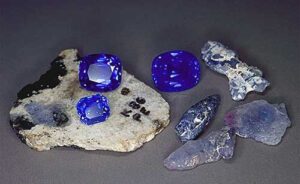
The story of the Kashmir Sapphire begins in the late 19th century when a remarkable discovery was made high in the remote mountains of Kashmir, India. Nestled amid the breathtaking landscapes, these sapphires showcased an unparalleled velvety blue color, often described as “cornflower blue.” The gem’s unique color was attributed to the presence of a combination of iron and titanium within its crystal lattice.
What sets Kashmir Sapphires apart is their mesmerizing color and incredible rarity. The velvety blue hue, coupled with exceptional clarity, creates a gemstone that is a true testament to nature’s artistry. However, what truly elevates the Kashmir Sapphire to iconic status is the fact that these sapphires were only mined for a short period of time in the late 19th to early 20th century. Due to the limited duration of mining, the Kashmir Sapphire is now an elusive treasure that is exceedingly rare and highly coveted.
The allure of Kashmir Sapphires extends beyond their appearance and rarity. These gems have a storied history and have graced the jewelry of royalty and the elite. Their deep blue color evokes feelings of serenity and elegance, making them a favorite for those who seek both beauty and meaning in their gemstone choices.
As the world of gemstones continues to evolve, Kashmir Sapphires remain a symbol of enduring beauty and timeless allure. Their velvety blue hues, coupled with their legendary history, create a gemstone that transcends trends and speaks to the heart of gem enthusiasts and collectors alike. Kashmir Sapphires stand as a reminder that the Earth holds treasures that are not only visually stunning but also hold stories of the past and dreams of the future.
19. Chameleon Diamond: Nature’s Color-Shifting Marvel
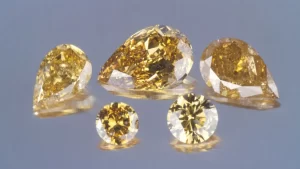
Chameleon Diamonds are a subset of naturally occurring diamonds with a unique and fascinating characteristic: they have the ability to temporarily change color when exposed to certain environmental conditions. Typically, a Chameleon Diamond will shift from its original color, which is often a light olive or grayish green, to a deeper, more intense greenish-yellow or brownish hue. The color change occurs when the diamond is subjected to heat or light and then gradually reverts to its original color when left in the dark.
The exact cause of this phenomenon is still the subject of ongoing scientific research, but it is believed to be related to the diamond’s atomic structure and the presence of hydrogen within the crystal lattice. The temporary nature of the color change adds an element of intrigue to the gem, as it undergoes a metamorphosis before returning to its original state.
Chameleon Diamonds are exceedingly rare, making them highly sought after by collectors. Their unique color-changing property adds an element of surprise and delight to these already precious gems. Jewelry designers and connoisseurs are drawn to their captivating nature, creating pieces that showcase the gem’s dynamic transformation.
The mystique of Chameleon Diamonds lies not only in their rarity and color-changing ability but also in the ongoing research that seeks to unravel the secrets behind this phenomenon. As scientists continue to explore the mysteries of these gems, Chameleon Diamonds remain a gemological wonder that reminds us of the complex and enchanting nature of the Earth’s treasures.
20. Blue Garnet: A Color-Changing Wonder
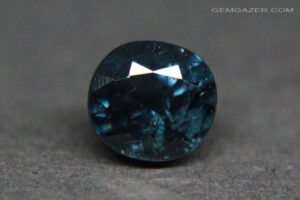
The Blue Garnet’s captivating journey began in the late 1990s when it was discovered in the Bekily region of Madagascar. Its name hints at its remarkable characteristic: a mesmerizing shift from blue-green under daylight to purplish-red under incandescent light. This exceptional color change is a result of the interplay between the garnet’s trace elements and its crystal lattice structure.
The precise combination of vanadium, chromium, and other elements within the Blue Garnet’s composition is responsible for its extraordinary color-changing phenomenon. The gem’s ability to showcase two distinct hues depending on the lighting conditions sets it apart as a gemological rarity that continues to intrigue gemologists and collectors alike.
The rarity of the Blue Garnet is further elevated by the fact that it is found in only a few select locations around the world. Its limited geographic occurrence, coupled with its color-changing beauty, has made it highly sought after by collectors and enthusiasts who appreciate gems that offer a captivating visual experience.
In the world of jewelry design, Blue Garnets have been embraced for their unique color-shifting nature. Jewelry pieces featuring Blue Garnets can showcase the gem’s dual personality, transitioning seamlessly from one enchanting color to another. From solitaire rings to intricate pendant designs, the gem’s color-changing ability adds an element of surprise and fascination.
Conclusion
The world of gemstones is a treasure trove of diversity, beauty, and rarity. While some gemstones are widely recognized, there exists a realm of rare gems that are even more captivating due to their scarcity and exceptional characteristics. From painite to










